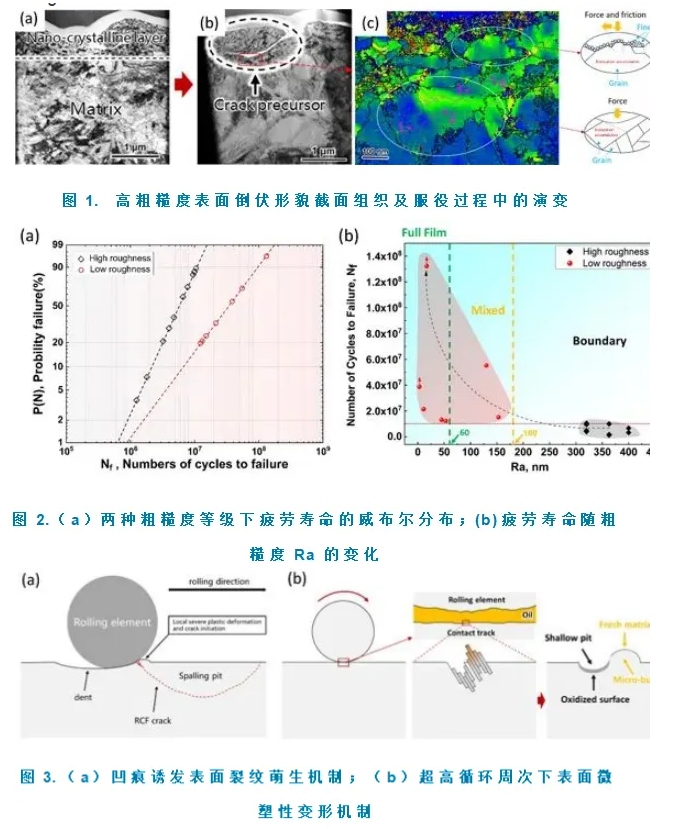
How to improve the service life and stability of bearings in harsh service environments is a difficult problem facing the development of high-end bearings in China. The main failure mode of rolling bearings is rolling contact fatigue, which is usually divided into two types: spot pit of surface origin and spalling of subsurface origin. With the improvement of smelting and heat treatment technology, the failure phenomenon of subsurface origin is decreasing, and the failure of surface origin induced by surface damage becomes the key factor restricting the further improvement of fatigue life. In industrial applications, roughness and other topography parameters are commonly used to reflect the machining quality of bearing surfaces, but the differences in organizational structure formed by surface machining with different roughness are ignored. The influence of structural differences in shallow surface layers on the rolling contact fatigue failure mechanism and fatigue life of surface origin has not been fully understood and studied.
Under the support of the strategic pilot science and technology project of "Autonomous Controllable Manufacturing of high-end Bearings" of the Chinese Academy of Sciences, the team of Wang Jianqiu from the Material Corrosion and Protection Center of the Institute of Metal Research of the Chinese Academy of Sciences conducted a systematic study on the relationship between surface damage and manufacturing process of bearing steel in a simulated service environment. Recently, Wu Di project researcher (corresponding author) and doctoral student Xia Zhuofan (first author) et al., based on the previous research on the failure mechanism of heavy load rolling contact fatigue, designed the initial surface processing technology of different roughness levels, and carried out relevant experiments through the thrust disc rolling contact fatigue testing machine. It is found that the lodging morphology at the deep wear marks on the high roughness surface can be used as the precursor of surface cracks, which promotes the early propagation of fatigue cracks along with a large number of micro-cracks in the formed organami crystal layer (FIG. 1). By reducing the roughness and, more importantly, removing the machined nanocrystalline layer at the same time, the rolling contact fatigue life can be increased by several times or even orders of magnitude (Figure 2), and the cost required for the control of the processing process is low, which is of great significance for improving the service life and stability of the bearing.
In addition, different from the previous view that failure under conditions of heavy load and low roughness is caused by subsurface spalling, this study found a new failure mechanism, that is, under conditions of heavy load and low roughness, surface initiation cracks expand step by step to form spalling up to subsurface depth, which mainly depends on severe plastic deformation caused by surface notch. There is also a microplastic deformation of the bearing steel under the ultra-high service cycle (108), which increases surface stress concentration and friction between contact surfaces (Figure 3). This provides a new surface treatment design idea for developing high-end bearings with ultra-high rolling contact fatigue life under heavy load conditions.
The results of the relevant research were recently reported in "Rolling contact fatigue failure mechanism of bearing steel on different surface roughness levels under heavy. "load" was published in the International Journal of Fatigue 179 (2024) 108042.
